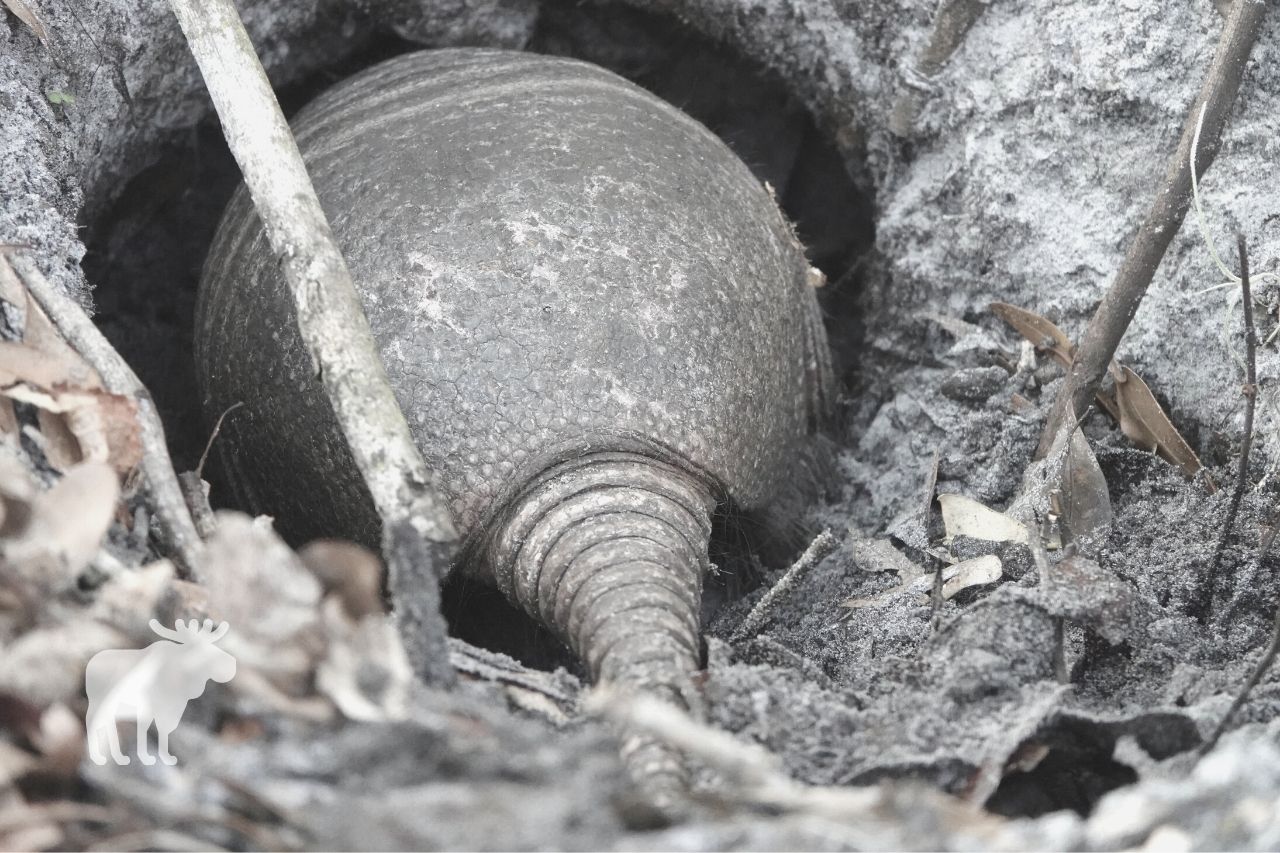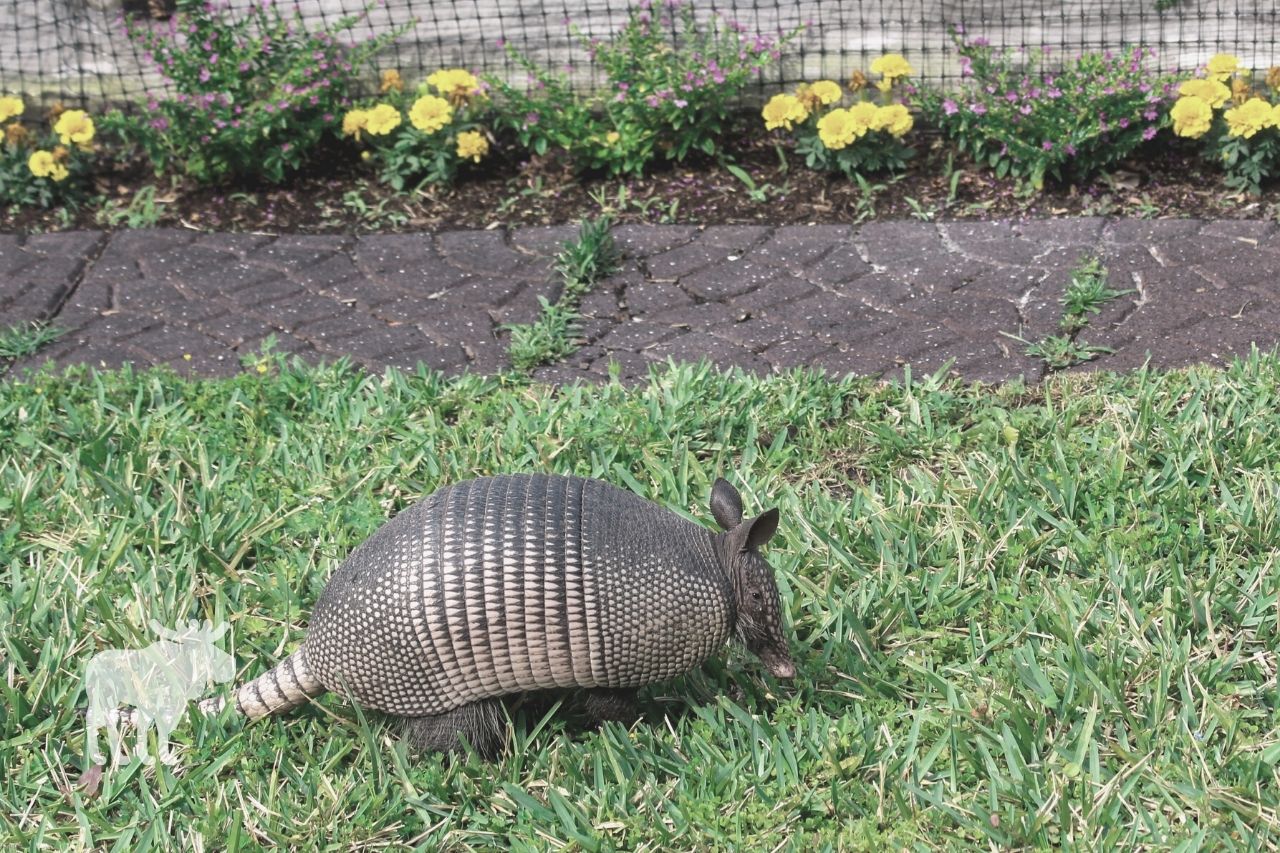Armadillos are cute little creatures, but they can cause problems in your yard by digging up lawns and flower beds. If you want to get rid of armadillos, it will be easiest to start by finding where they live. Read on to learn more about how to find an armadillo burrow and humanely remove the armadillos living inside.
What You'll Learn Today
How Do You Find an Armadillo Den?

According to The Georgia Gardener, a good way to find an armadillo’s den is to look for areas of flattened earth. Armadillos travel the same paths over and over again while traveling from their burrows to their favorite places to eat.
Start by looking at the areas in your yard that have been damaged by armadillos, then check the ground around these areas to get an idea which direction the armadillo normally travels. You may see a well-defined path immediately, or you may have to look a little farther if the armadillos haven’t been visiting your yard for very long.
Once you’ve found the path, simply follow it back to the armadillo’s den.
What Does an Armadillo Hole Look Like?
An armadillo hole is any cavity that leads to an armadillo’s underground burrow. These holes are usually about 6 to 7 inches wide.
Armadillo holes may be found in the side of a gentle slope, underneath uprooted trees, or flat in the ground. They are roughly circular in shape but may appear more like sunken depressions in the dirt.
Many times, there is an easy to define pathway leading from the hole, indicating the armadillo’s most frequently used route.
Check out this video of an armadillo digging a hole to get a better idea what an armadillo hole looks like.
How Deep are Armadillo Burrows?
Most armadillo burrows are at least 5 to 7 feet deep, though this may vary somewhat based on species and region. Most often, there are multiple armadillos living in one burrow, so these burrows have to be large.
Armadillo burrows can be up to 25 feet wide, though this is fairly rare and, again, may depend on species and region.
The burrows in your yard are probably on the smaller side unless the armadillos have become well established without your knowledge. Usually, it’s easy to spot armadillo damage as soon as armadillos begin moving into your area, so you can remove them before they become too well established.
What Time of Night Do Armadillos Come Out?
Armadillos are nocturnal creatures, but because they can’t see well, they prefer to scavenge for food when there is a small amount of light available.
The best time to see armadillos coming out of their burrows is late in the evening or early in the morning.
Armadillos can sleep for as much as 16 hours each day, and they rarely leave their burrows except to go in search of food. While you may occasionally find them scrounging around during daylight hours, or even in the middle of the night, the best time to see them is at dawn or dusk.
How to Get an Armadillo Out of its Hole?

If you’re trying to trap and remove an armadillo, you may think that the best way to do so is to force it out of its burrow.
It isn’t easy to get armadillos out of their burrows, but there are some things you can try that will act as repellents, making the armadillos leave on their own.
Some repellents that seem to be fairly effective against armadillos include:
Castor oil
Any castor oil-based repellent works great for driving armadillos away. Not only do they hate the smell, but the oil seeps down into the ground and spoils their food source.
To use castor oil to get an armadillo out of its hole, mix it with an equal amount of water in a spray bottle, then spray the mixture down into the hole and all around it. The armadillo may not leave immediately, but be sure and have a trap ready for when it does.
Cayenne pepper
Cayenne pepper won’t hurt the armadillo but will irritate its paws and nasal passages. While it may not drive the armadillo out of the hole right away, it may convince it to stay away once it has left.
Sprinkle a small amount of the pepper in and around the hole. There’s no need to use too much, as a little bit will go a long way.
Predator urine
You can buy wildlife repellents made from the urine of wolves, coyotes, and other predators. These repellents will make armadillos think there is a predator in the area and will prompt them to search for a new home.
Sprinkle or spray a bit of the repellent down the hole and around the outside of it. Again, these repellents probably won’t work immediately, but once the armadillos leave, they will likely be uninterested in coming back.
Granular repellents
Generic wildlife repellents can also be fairly effective at convincing the armadillos to leave. Not all of these repellents are created equal, however, so make sure you choose one that specifically states it is effective against armadillos.
Sprinkle the repellent in and around the hole, following package directions for how much to apply. Depending on the specific repellent, it may drive out the armadillo immediately or work more slowly.
Mothballs?
As you probably know, mothballs are good for getting rid of much more than just nuisance moths. However, DO NOT use them outdoors! Mothballs are made from dangerous chemicals and are clearly labeled for indoor use only since they may poison the soil and other animals.
If you’re looking for an immediate way to get an armadillo out of its burrow, you can try running water down into the hole. You don’t want to drown the armadillos inside, but if you flush their home with enough water, they should go scurrying for higher ground and, preferably, into a live animal trap you have waiting for them.
Conclusion
Finding an armadillo burrow is fairly easy–just look for a 6- or 7-inch hole in the ground. These holes may be near trees, in the sides of slopes, or flat in the ground.
To drive armadillos out of their holes, try using a scent repellent to make them leave or water to flush them out.
Haha, the armadillo looks like a very hard-working farmer when he is digging the hole.
I have a structure with a concrete floor in farmland in Gadsden County Florida. It is almost Spring 2022, and I have two burrow holes going under the floor that are about four to six inches in diameter. I believe that it is an Armadillo hole. What do you recommend that I do to take care of this?
https://youtu.be/C21L1_dB2h8
You Tube! This totally worked!
It sure was helpful when you said that you could get an idea of which direction the armadillo normally travels when you check the ground around the areas that have been damaged by armadillos. This reminds me of my parents who have been complaining about their flower beds getting damaged by armadillos. I would assume that using heavy-duty armadillo traps would better help them exterminate their infestations, so I will ask them to consider speaking with a professional.